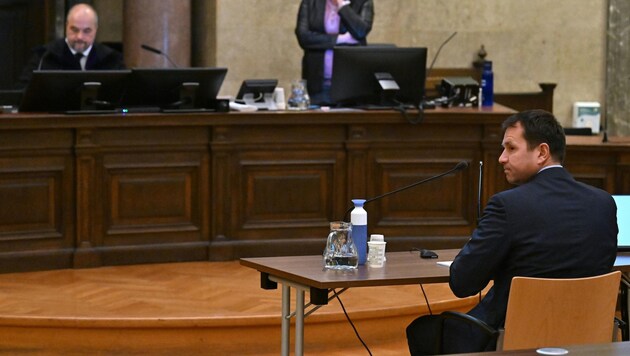Skewed optics
Many controversial questions about the judge after the Kurz trial
Following the guilty verdict in the trial surrounding Sebastian Kurz, the judge is being criticized for concealing a disciplinary sanction.
It is a development in the trial surrounding Sebastian Kurz that has a skewed appearance on several levels. The background: Kurz judge Michael Radasztics was sentenced to a disciplinary penalty in May 2023. The reason was a betrayal of secrets in the Eurofighter case. Radasztics allegedly leaked information from investigation files to former MP Peter Pilz on December 20, 2018. Just one day later, "Pilz and friends", including the current Minister of Justice Alma Zadić, submitted a parliamentary question.
Radasztics was then appointed judge in the Kurz trial in the summer of 2023. In the meantime, Radasztics appealed against the disciplinary penalty. On the very first day of the trial in October 2023, Kurz defense lawyer Otto Dietrich requested a change of judge.
The reason: his closeness to Kurz critic Pilz. Judges in Austria decide for themselves whether they are biased. Radasztics saw no reason to leave the bench. He concealed his disciplinary sanction.
And now comes the staircase joke: twelve trial days later, Radasztics convicts the former chancellor on the grounds that if you speak the truth but it is incomplete, you are making a false statement to the sub-committee.
However, there are even more inconsistencies. The big question is: why did it take a good two months for the decision against the judge, which became legally binding in December, to see the light of day on February 26? The Graz Higher Regional Court passes the ball to the Supreme Court (OGH). "The anonymization took so long. The Supreme Court's evidence office does it for us," says a spokesperson for the OLG.
Review only takes two and a half days
An inquiry at the Supreme Court reveals something astonishing: the evidence office merely checks the anonymization process. "That takes two and a half days. A secretary does it." Then it goes straight back to the Higher Regional Court, which has to ensure publication.
In Radasztics' case, the verdict only arrived at the Supreme Court for review on Monday, February 19. Nevertheless, the public should have been informed of the ruling against the Kurz judge on the day of the Kurz ruling at the latest. Was this to avoid irritation?
Another peculiarity stands out. The decision for the penalty became legally binding in December. The reason: both sides withdrew their appeals. However, this requires the approval of the ministry - and is also "extremely rare", according to a judicial insider. Questions upon questions that would like to be answered.













Da dieser Artikel älter als 18 Monate ist, ist zum jetzigen Zeitpunkt kein Kommentieren mehr möglich.
Wir laden Sie ein, bei einer aktuelleren themenrelevanten Story mitzudiskutieren: Themenübersicht.
Bei Fragen können Sie sich gern an das Community-Team per Mail an forum@krone.at wenden.